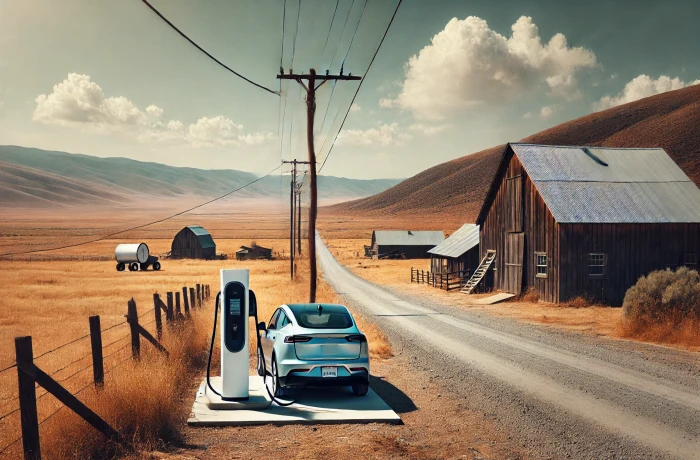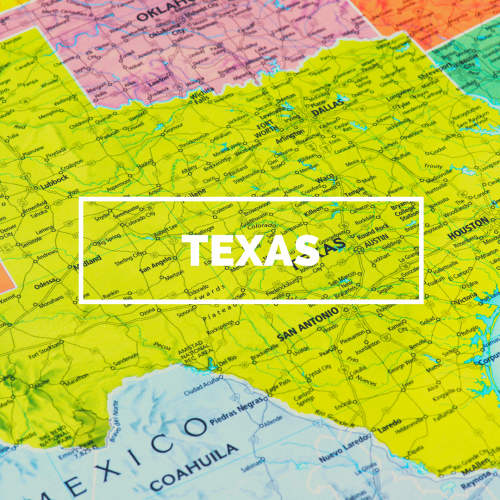Rural EV Charging Challenges: Key Issues Explained

Lila Claybourne
Oct 22, 2024

I. Introduction
The electric vehicle (EV) revolution is reshaping transportation, but while cities are seeing widespread adoption and infrastructure development, rural areas lag behind. EVs provide numerous benefits, such as reducing emissions and lowering operating costs, but for rural communities, infrastructure remains a key barrier. Without reliable access to charging stations, rural EV owners face significant challenges in day-to-day use.
This article delves into the primary obstacles facing rural areas when it comes to EV charging infrastructure and explores possible solutions.
II. Current State of EV Adoption in Rural Areas
EV adoption rates in rural America have been slower compared to urban regions. Rural drivers, on average, cover longer distances, which makes the lack of available public charging infrastructure even more critical. Urban areas often have dense networks of charging stations, allowing drivers easy access. However, in rural communities, the scarcity of chargers leaves potential EV owners concerned about the practicality of owning an electric vehicle.
Economic factors also play a role. Although EVs are more economical to maintain and operate over time, their initial cost is still a major hurdle for many rural households. Rural residents often don't factor in the long-term savings from reduced maintenance and fuel costs, which means they may be more hesitant to switch to electric.
III. Key Challenges Facing Rural EV Charging
Lack of Charging Infrastructure (Charging Deserts)
One of the most significant barriers is the lack of accessible charging stations, particularly in rural areas, which are often referred to as “charging deserts.” These regions lack the density of chargers required to support a growing number of EVs.
Public charging infrastructure, such as Level 2 and DC Fast Chargers, is sparse in rural regions. This limited access reduces interest in EV ownership as potential buyers worry about being stranded without a nearby charger.
In urban areas, the availability of chargers is much higher, offering multiple options for drivers. However, rural areas face a lower population density, making it less economically viable to install public charging stations in certain locations. This creates a feedback loop where fewer charging stations lead to lower EV adoption, and lower adoption reduces the financial incentive to build more stations.
Range Anxiety in Rural Areas
Range anxiety is a significant concern for rural EV drivers. Because rural residents tend to travel longer distances between destinations, they often worry about their vehicle running out of battery power without access to a charging station. This fear is compounded by the fact that rural areas are less likely to have fast-charging options, making recharging a lengthy process.
In contrast, urban areas have a denser network of chargers, reducing range anxiety for city dwellers. For rural drivers, however, even short trips can feel risky if they aren't sure where or when they will be able to recharge.
High Installation and Maintenance Costs
Installing and maintaining EV chargers in rural areas can be prohibitively expensive. Urban regions benefit from high concentrations of EV users, which provides a steady stream of customers to justify the cost of building and operating charging stations. In rural areas, however, the lower population density means that stations are used less frequently, making it harder to recover installation and operational costs.
Level 3 DC Fast Chargers, which are essential for long-distance driving, are particularly expensive to install. These chargers require significant electrical infrastructure upgrades, making the initial costs high. The ongoing maintenance of these stations can also be challenging in remote areas, where repair services may not be readily available.
Utility Grid Limitations
The utility grid in many rural areas is not equipped to handle the power demands of EV fast-charging stations. These areas often rely on outdated electrical grids that weren't designed to support the energy needs of modern EV charging infrastructure. Installing a DC fast charger may require substantial upgrades to the local power grid, including the installation of three-phase power lines and new transformers.
These necessary upgrades can add significant costs to the process of building charging stations in rural areas. Without a robust grid, even the most advanced charging technology won't function effectively, making utility infrastructure a critical component of rural EV adoption.
Weather Challenges
Weather can have a significant impact on EV performance, particularly in colder climates. In winter, EV batteries are less efficient, reducing the vehicle’s range. This increased demand for charging is particularly challenging in rural areas, where chargers are already few and far between.
Moreover, many rural charging stations are outdoors and lack shelter, exposing drivers to harsh weather conditions while they wait for their vehicles to charge. The lack of sheltered charging stations can make the charging experience uncomfortable and impractical during extreme weather, further discouraging rural residents from adopting EVs.
IV. Possible Solutions and Future Outlook
Government Initiatives and Funding
Government funding is playing a key role in addressing these challenges. Federal programs, such as those introduced under recent infrastructure legislation, provide financial incentives to build charging networks in rural areas. Grants and loans help offset the high costs of installing and maintaining EV chargers, making it easier for rural communities to invest in this essential infrastructure.
These initiatives are designed to bridge the infrastructure gap between urban and rural areas, ensuring that all regions can benefit from the transition to electric vehicles. By providing targeted financial support, the government aims to encourage more widespread adoption of EVs in rural communities.
Innovations in Charging Technology
Technological advancements are also helping to address the challenges of rural EV charging. Fast-charging stations that can recharge a vehicle in a fraction of the time required by older models are becoming more common. These stations make EV ownership more practical for rural drivers, as they reduce the amount of time spent charging during long trips.
Smart grid technology is another innovation that could help rural areas better manage the energy demands of EV charging. This technology allows utilities to more efficiently distribute power and prevent overloading the grid, which is particularly important in areas with older electrical infrastructure.
Partnerships with Local Businesses and Utilities
Local businesses and utility companies are crucial partners in expanding EV charging infrastructure in rural areas. Small businesses such as gas stations, grocery stores, and convenience stores can install Level 2 chargers, providing convenient access points for EV drivers. By strategically placing chargers in key locations, rural communities can create a more comprehensive charging network that supports both residents and visitors.
Utility companies, on the other hand, play an essential role in upgrading the electrical grid to support new charging stations. Working together, local businesses, utilities, and governments can develop a coordinated approach to building EV infrastructure in rural areas.
Public-Private Collaborations
Public-private partnerships can provide additional support for expanding EV charging networks. These collaborations allow private companies to share the financial burden of building and operating charging stations with public agencies. By working together, private businesses and governments can develop innovative solutions that make it easier to install and maintain chargers in rural areas.
Incentivizing private investment in EV infrastructure is crucial for ensuring that rural areas don't fall behind as the nation transitions to electric mobility. Public-private partnerships also help foster the development of EV-related industries, such as car dealerships and repair centers, in rural regions, creating jobs and supporting the local economy.
V. Conclusion: Powering the Future: Solutions to Bridge the Rural EV Gap
The transition to electric vehicles offers numerous environmental and economic benefits, but rural areas face unique challenges that must be addressed to ensure that they are not left behind. From charging deserts and range anxiety to high installation costs and grid limitations, rural communities need targeted solutions to overcome these obstacles.
Government funding, technological innovations, and strategic partnerships will all play a critical role in building the EV infrastructure necessary for rural areas to thrive. With continued investment and collaboration, the future of rural EV charging looks promising, ensuring that the benefits of electric vehicles will soon be accessible to all.
VI. FAQs
Why is EV adoption slower in rural areas?
The slower adoption is primarily due to the lack of charging infrastructure and the longer distances rural residents travel, making it harder to rely on EVs without accessible charging options.
What is a charging desert?
A charging desert refers to a region with very few or no public EV charging stations, creating challenges for EV drivers who need reliable places to charge their vehicles.
Are there government programs to support rural EV infrastructure?
Yes, there are federal grants and loans aimed at helping rural communities develop the necessary charging infrastructure.
How does cold weather affect rural EV charging?
Cold weather reduces battery efficiency, meaning EVs need to be charged more frequently. This is a particular challenge in rural areas where chargers are already scarce.
What role can local businesses play in rural EV charging?
Local businesses can install Level 2 chargers at their locations, providing much-needed charging access for EV owners in rural areas.
Related Posts
















